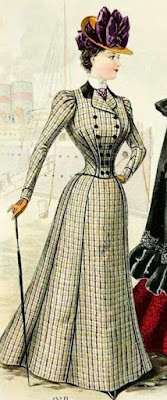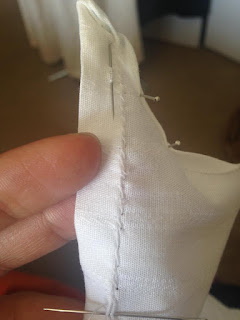Historical Sew Monthly Challenge: #2 Blue
The Challenge: Blue
The Fabric: 100% Wool yarn
Pattern: Hand Knit Garters Pattern by Gloria Sheu
Year: 17th-19th century
Notions: none
How Historically accurate is it: Knitted garters were very common in Europe and Colonial America during the late 17th century and well into the early 19th century. They were a form of fashion and practicality; they were also sometimes woven on a loom. I'd say that this pattern is very accurate. The only inaccurate thing about my project was that the finished project was dyed with blue food dye, but then again, what wasn't dyed with food dye back then?
Hours to complete: I'm going to figure at least 4 hours each garter
First Worn: Only to try on for this picture. I may wear it later for reenactments in the near future.
Total Cost: Since I already had both materials in my stash, it's really hard to pinpoint how much I paid for both. I'm going to figure that it was $3.99 for the un-dyed 100% wool yarn, and $5.20 for the McCormick food dye.
The Fabric: 100% Wool yarn
Pattern: Hand Knit Garters Pattern by Gloria Sheu
Year: 17th-19th century
Notions: none
How Historically accurate is it: Knitted garters were very common in Europe and Colonial America during the late 17th century and well into the early 19th century. They were a form of fashion and practicality; they were also sometimes woven on a loom. I'd say that this pattern is very accurate. The only inaccurate thing about my project was that the finished project was dyed with blue food dye, but then again, what wasn't dyed with food dye back then?
Hours to complete: I'm going to figure at least 4 hours each garter
First Worn: Only to try on for this picture. I may wear it later for reenactments in the near future.
Total Cost: Since I already had both materials in my stash, it's really hard to pinpoint how much I paid for both. I'm going to figure that it was $3.99 for the un-dyed 100% wool yarn, and $5.20 for the McCormick food dye.


.jpg)


Comments
Post a Comment